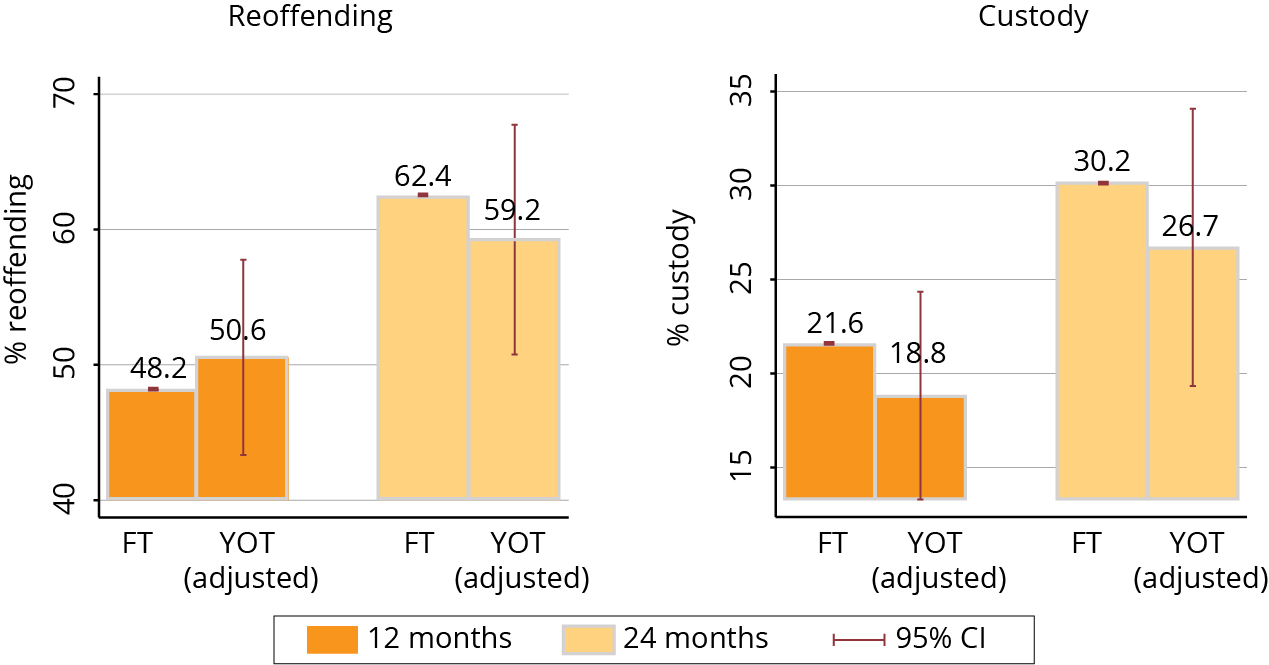Summary
Background
Youth on Track is an early intervention scheme that was introduced in 2013 to help reduce the risk of young people re-offending. The scheme assigns young people to caseworkers for up to 12 months. Caseworkers administer interventions to the young person, including cognitive-behavioural and family interventions. They can also refer young people to external services to address criminogenic needs and engage with schools to increase attendance. Youth on Track is only available in seven sites in NSW and for young people who have never had a supervised order.
Between August 2017 and June 2020, a randomised controlled trial (RCT) was implemented to evaluate the Youth on Track program. A brief intervention called Fast Track was created as the control arm to ensure some level of treatment for all young people participating in the RCT. Fast Track was capped at six weeks of case management. Caseworkers did not deliver any structured interventions to the young person, but could refer them to external services.
We examined whether there were any differences in recidivism, education, employment, community activity, and housing outcomes between Youth on Track and Fast Track participants.
Key findings
For both the 12- and 24-month follow-up periods, there were no statistically significant differences between Youth on Track and Fast Track, in the proportion of young people who reoffended or entered custody. After adjusting for important characteristics, we estimate that 48.2% of Fast Track participants reoffended within 12 months compared with 50.6% of Youth on Track participants. Youth on Track participants were 3.2 percentage points less likely to reoffend and 3.5 percentage points less likely to enter custody within 24 months, but these differences were not statistically significant. We found that in certain subgroups, Youth on Track participants had much larger reductions in offending and custody.
We also found that Youth on Track participants were 6.2 percentage points more likely to be in employment at the end of their program and worked one hour more each week, on average, compared with Fast Track participants. Youth on Track participants were also 1.5 percentage points less likely to be in out-of-home care at program exit. Both these differences were statistically significant. However, no significant differences were found between the two groups in terms of school attendance, involvement in community activities or stable accommodation at program exit.
Conclusion
Youth on Track participants had similar reoffending and custody rates to Fast Track participants. Variability in the implementation of the scheme across sites and over time may partially explain these effects. Further research should be undertaken to examine the efficacy of key aspects of the program, including the risk assessment tool and behavioural intervention.
